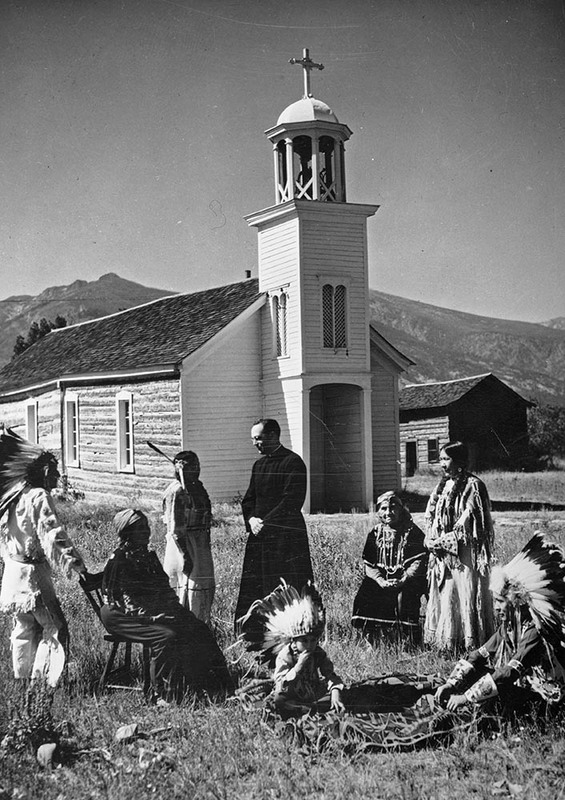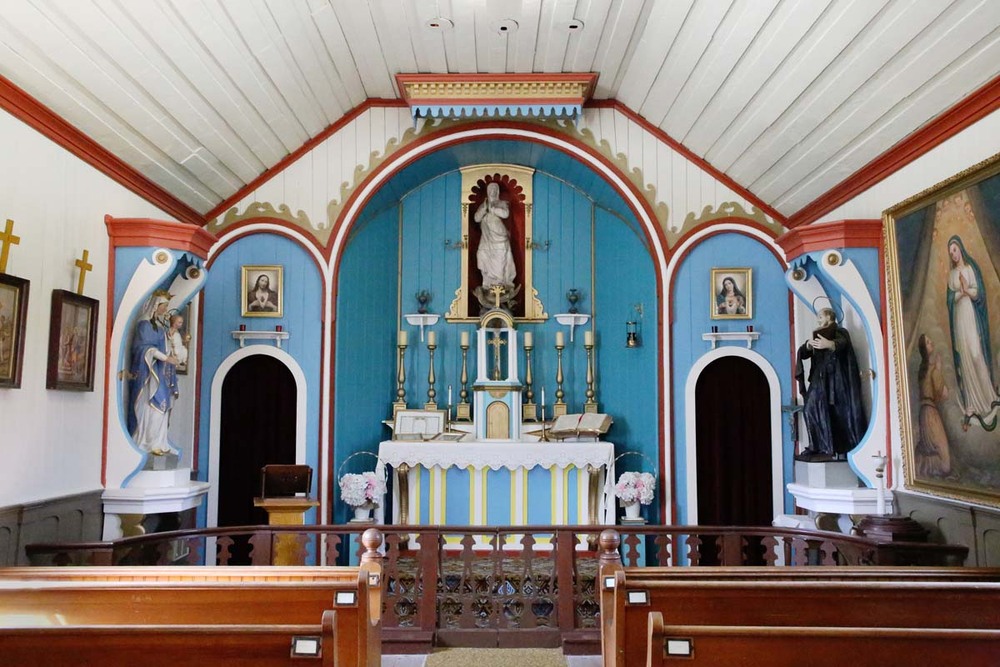St. Mary's Mission Historic District

Jesuit priests and lay brothers founded St. Mary’s Mission—the first mission in the Northwest—near this site in 1841. The Jesuits closed the mission in 1850, returning in 1866. For the next quarter century, they helped the Salish adapt from hunting to farming as the buffalo disappeared. The priests helped support and advocate for the Salish people and provided medical services and spiritual guidance to both Indians and whites. When the U.S. government forced the impoverished Salish to leave their beloved Bitterroot Valley for the Flathead Reservation in 1891, St. Mary’s closed. An influx of homesteaders prompted the creation of St. Mary’s Parish in 1910, and the old mission church reopened. In 1911, the Salish returned to St. Mary’s to celebrate their Bitterroot heritage, a tradition they still maintain. The historic district includes the 1866 church and pharmacy, designed by the multi-talented Father Anthony Ravalli. Ravalli, also the architect of Idaho’s famed Cataldo Mission, employed log building techniques, ingeniously adapting European ecclesiastical architecture to the remote frontier. Chief Victor’s log home and the Indian burial ground recall the Salish presence. Adjacent is St. Mary’s Cemetery and Father Ravalli’s final resting place. Two gnarled apple trees provide living evidence of the Jesuits’ agriculture. The new St. Mary’s, built in 1954 with donations from Montana and beyond, represents an unprecedented preservation effort to save the endangered mission church from deterioration through constant use. Today, St. Mary’s churches—old and new—define the historic complex as a place of significance to both Indian and white communities.
Audio
Images


